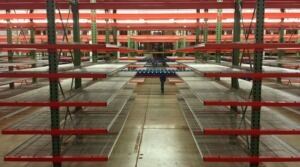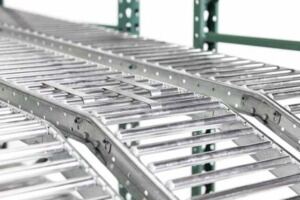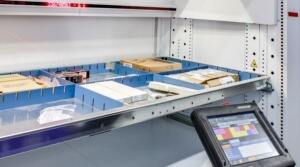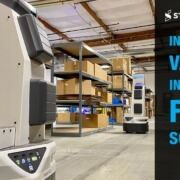According to Digital Commerce 360, e-commerce, as a portion of total retail sales, rose 44% in 2020, triple the rate increase of sales over the prior year. While the result has been increased convenience for consumers, warehouses, fulfillment centers, and distribution centers are looking to overcome challenges associated with that dramatic shift in consumer behavior.
Some are looking at building new facilities dedicated to fulfilling these types of orders. Others are looking to design and technology solutions that can help them meet the unique demands of their current facilities. Either way, they are seeking to resolve fulfillment challenges that are resulting from the rise of e-commerce.
With massive change in consumer behavior underway – and more change to come down the road – let us take a closer look at each of the significant pain points caused by the rapid increase of e-commerce on the supply chain.
The most accessible place to start in examining common challenges to facilitate more e-commerce orders is in the facility’s design. Warehouses are reaching storage capacity for their original intended design and function. After all, many warehouses were built to sustain and maximize full pallet orders. Now, there is a requirement to facilitate a more significant share of e-commerce orders, which means they need to react to higher order volume and store a wider variety of SKUs.
There are also inherent design hurdles to overcome regarding where – and how – the products are stored and retrieved. For instance, the warehouse goes from storing pallets and cases in static racking, where employees are driving powered equipment to travel to a location, pick a pallet or case, take it to a shipping area, and send it out the door. Now, they need to make individual products accessible, typically available at the floor level, and make it easy for someone to pick either a unit or multiple SKUs for an order.
They need to mold their processes to move from case-or-pallet picking to include the each picking required by e-commerce. In that transition, they are learning that it is very different to pick individual products.
With each picking, the process for fulfillment is nearly double the number of steps compared to case-or-pallet selection. Forklift retrieval for full pallet or case picking, where a high volume of a single product can be moved and shipped – process warehouses have made efficient for decades.
For a higher percentage of orders, workers must now pick, consolidate, pack, and then ship orders, all while customers are demanding their products be delivered more quickly than ever. Now operations will need to establish a consolidation process, packing process, and shipping process.
After all, e-commerce orders are requiring these businesses to double their processes. Are those processes optimized? How are they integrated with the full pallet orders? What tools are available to help with the transition?
Those are all reasons why the operational cost of fulfilling a single order for e-commerce is higher than that of a pallet or case order. Distribution centers and warehouses are already under increased wage pressure, and now they need to integrate these new, increased operational expenses that chip away at their bottom line.
In addition, the costs for labor rising are not only the costs for labor, but the availability of reliable labor is a real challenge that warehouses, fulfillment centers, and distribution centers are all facing. Whether it is due to the COVID-19 pandemic or other external forces, absenteeism is growing in this sector.
Combine all the above, then also factor that we are amid a labor shortage in the supply chain industry, which in part arose due to a sharp rise in demand for trained workers, among other external factors.
What Challenges Are You Experiencing?
What other challenges are you experiencing as a result of the rise of e-commerce? There are emerging trends that dynamic operations respond to, but we understand that each fulfillment center has its unique challenges, and we are here to help.
To adjust to the challenges caused by a rising share of e-commerce orders, a similarly increasing share of distribution and fulfillment centers are investigating adding automation, technology, and dense storage solutions. Autonomous mobile robots, automated packing solutions, and goods-to-person picking solutions all have applications to combat the challenges caused by the higher order volume and can be implemented without requiring an investment in costly infrastructure. These solutions also help relieve high labor costs and labor reliance while helping drive throughput and speed in the fulfillment process.
We have multiple partners who can provide solutions to these challenges in introduce increased labor efficiency into your operations. Our team has years of experience designing an ideal solution based on your data and our years of expertise.







